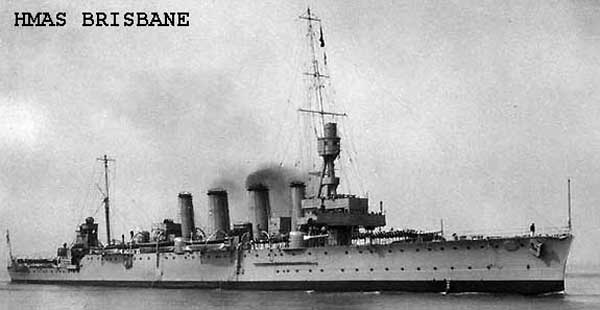THE GUNS OF HMAS BRISBANE IN DARWIN
by
Don Davie
Of 5440 tons displacement and having a main armament of eight 6-inch guns, the British Chatham class light cruiser comprised six vessels – three commissioned in the Royal Navy and three in the Royal Australian Navy. The Australian allocation, designated the Sydney class in Australian service, consisted of HMAS Sydney (1913), HMAS Melbourne (1913) and HMAS Brisbane (1916). Brisbane differed from the others of her class in that she was constructed at Sydney’s Cockatoo Dockyard, while the others were laid down in the United Kingdom. Brisbane was the last of the Australian vessels of the class to be paid off and was sold for breaking up in 1936.
The decommissioning of HMAS Brisbane coincided with implementation of the Australian Government’s decision to construct coastal defences at Darwin. While the passage of time often results in the distortion of secondary historical records, apparently reliable sources indicate that six of the 6-inch, Mark XI guns removed from Brisbane were installed at Darwin’s Emery Point and East Point batteries and at the Waugite battery on Cox Peninsula – two at each location. The East Point battery also featured two 9.2-inch, Mark X guns, which were installed later to become the principle armament of the fortress.
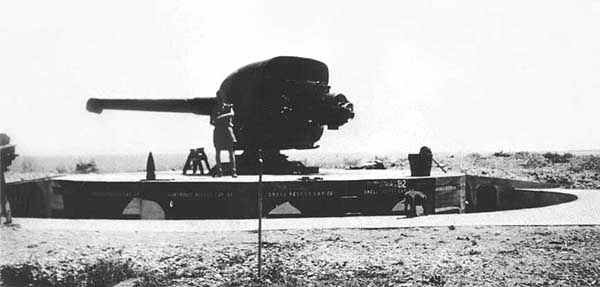
Right-hand gun emplacement at Emery Point in 1942.
The 6-inch guns were mounted in circular, ground-level emplacements. The rear of the right hand emplacements at East Point and Emery Point were excavated to form a semi-circular concreted trench with recesses, presumably for ready ammunition. The left hand emplacements at both sites do not have this feature and it is not clear whether this has always been the case. According to the information board at the right hand emplacement at East Point, the 6-inch guns there were test fired on 22 May 1934 and were last fired in August 1959.
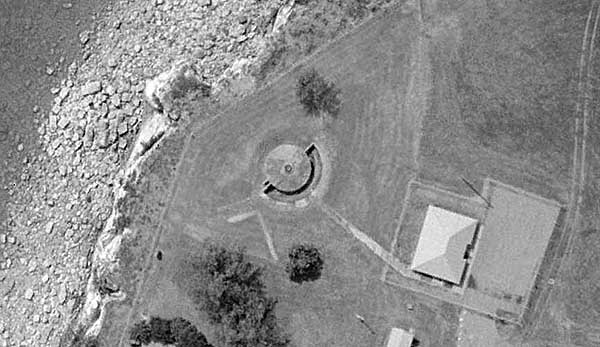
Right-hand gun emplacement at Emery Point as it exists today
The information board also notes that Brisbane’s guns were condemned and replaced in 1938 but does not identify the replacements. Replacement of the guns would have been rather surprising in a time of great austerity as they would not have seen much use during their time in naval service. Nevertheless, there is compelling evidence that the guns were replaced by those of the same class from HMAS Melbourne at that time.
Brisbane had a quiet war and had never been engaged in a significant action. There are two 6-inch guns in the grounds of the Darwin Military Museum at East Point – one to the right of the entrance and the other located in the grounds with other ordnance. An information board beside the latter identifies it as coming from Brisbane. The question of whether the Brisbane guns were replaced in 1938 is of some historical significance and further research is currently underway to determine whether the two guns held at the Darwin Military Museum are from Brisbane or from Melbourne. Any information that can be provided on this point would be much appreciated.
The Dudley battery is recorded as being equipped with two 4-inch, Mark VII guns and a mounting of twin 6 pounder, 10 cwt guns. A recent Northern Territory Government map depicting artillery installations in the East Point – Dudley Point area shows a ‘cruciform 6 inch gun mount’ at Dudley Point and there is also reference to cruciform 6 inch gun mounts in other sources. However, the twin 6 pounder emplacement is not shown on the map and is in the vicinity of the point shown as the cruciform mount. There has perhaps been an error in identification and any clarification on this point would also be appreciated.
In acts of heritage vandalism – anything for a quid – the Australian Government approved the sale of the coastal guns and other relics of the 1939-1945 War in Darwin to predominantly Japanese interests in the 1960s. It is particularly fortunate that the two 6-inch guns now at East Point survived. It would be most appropriate for them to be mounted on East Point’s right hand and left hand emplacements, where they could be seen in their proper element by local and interstate visitors.
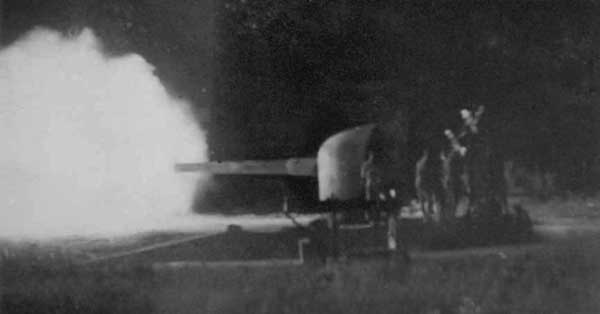
One of the guns emplaced at Emery Point firing at night in 1940.
Brisbane’s guns and the other static coastal defences installed in Darwin were sited for the protection of the naval fuel oil facilities at the port. They were relics of an era of warfare that had been bypassed by rapid developments in defence technology and practice, particularly in military aviation. They could play no part in the defence of Darwin against air attack beginning on 19 February 1942. They would have been vulnerable to the attacks by air that would have preceded, and accompanied, any Japanese sea-borne assault upon Darwin.
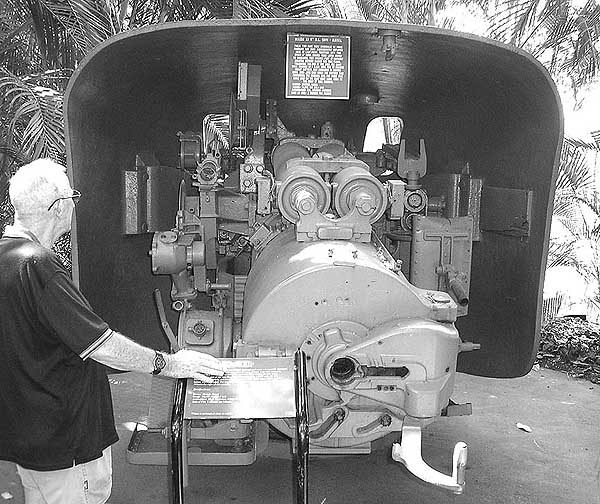
Six-inch gun on display at the Darwin Military Museum at East Point.
We are most grateful for Brian’s contribution to research on Darwin’s pre-war and wartime defence facilities and would welcome any further information, particularly if accompanied by photographs, from members or anyone else.
As was Fortress Singapore, Darwin’s seaward defences were evidence of the manifold inadequacies of British and Australian defence planning of the period. It was fortunate for Allied strategy, and for all Australians, that the Japanese had no intention of invading Australia at that time.
